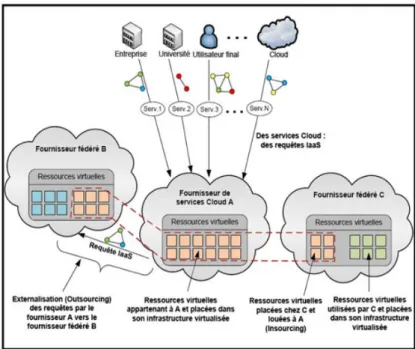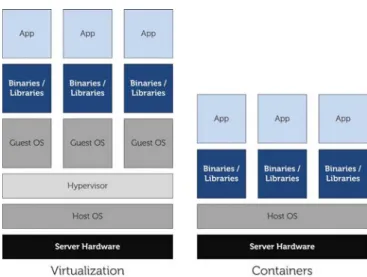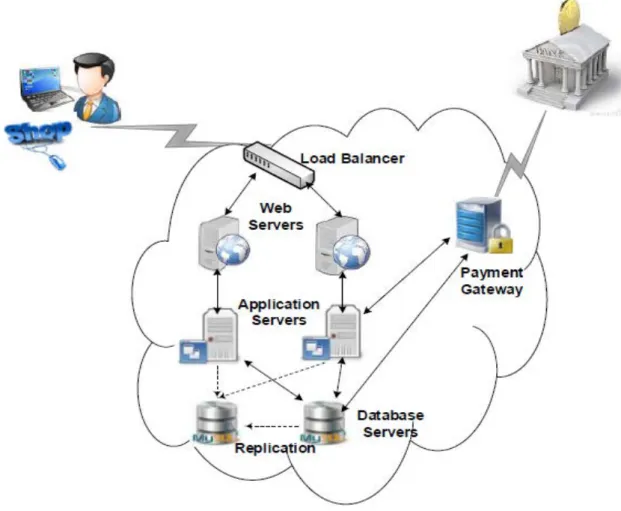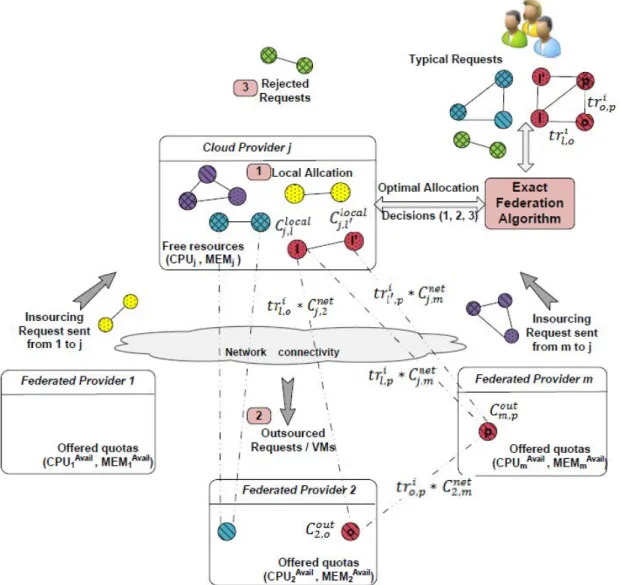Resource allocation in Cloud federation
Texte intégral
Figure
![Figure 1.1: The IDC’s forecasts on worldwide IT cloud services spending in billion dollars [1]](https://thumb-eu.123doks.com/thumbv2/123doknet/11407963.288140/18.893.266.671.127.360/figure-forecasts-worldwide-cloud-services-spending-billion-dollars.webp)
![Figure 1.2: A daily demand distribution of a typical Internet application [2]](https://thumb-eu.123doks.com/thumbv2/123doknet/11407963.288140/19.893.260.681.122.355/figure-daily-demand-distribution-typical-internet-application.webp)


Documents relatifs
Service provider can easily and cost-effectively deploy complex portfolio of services directly into the network infrastructure of the resources providers (IaaS/PaaS) and invoke
Cost of business expansion or entry into new markets: ACS provider shall pro- mote its product arguing that CC makes it easier for customers to expand their
Supplier opportunities are related financial advantages, but also to the possibilities to expand the customer base and to build new skills, see table 3. The financial
Our pending research focuses on both the organizational context (organizational adap- tation) as well as the institutional context of ERP vendors in adapting to software
It is also possible to execute the application at submission time without powering up the second server by changing the size to 4 vCPUs (App[C3]). In this simple use-case, we
Abstract—Cloud platforms are increasingly being used for hosting a broad diversity of services from traditional e- commerce applications to interactive web-based IDEs. How- ever,
While developing the CLP with feature of AaaS, it is significant to be clear about which type of cloud computing system better to use for perform the features of CLC and CLP. Familiar
and reduction of failure rate of hot PMs, as depicted in Fig.. Because with a larger number of PMs in a data center, the overall Cloud service availability increases, leading
![Figure 2.5: Interoperability and Inter-Cloud Scenarios.[5]](https://thumb-eu.123doks.com/thumbv2/123doknet/11407963.288140/40.893.255.690.570.809/figure-interoperability-and-inter-cloud-scenarios.webp)
![Figure 2.6: The Taxonomy of IaaS Pricing models.[6]](https://thumb-eu.123doks.com/thumbv2/123doknet/11407963.288140/48.893.183.769.128.484/figure-the-taxonomy-of-iaas-pricing-models.webp)



